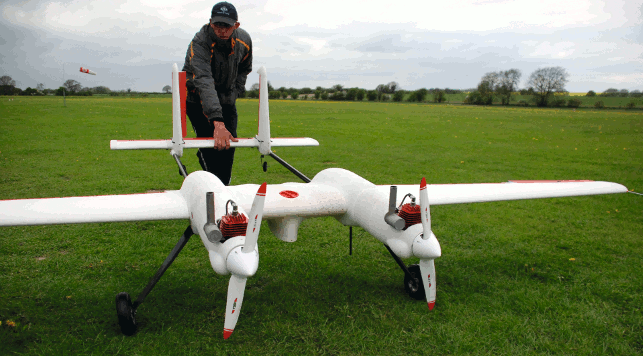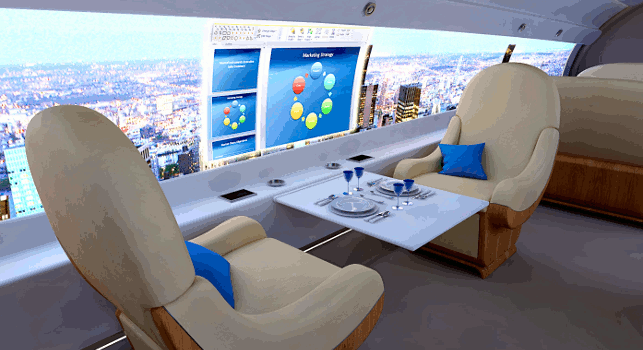Super speedy
For those who lament the loss of the Concorde from our skies, fear not as there is a new supersonic jet in the making.

The windowless passenger cabin will be covered with thin display screens embedded into the wall
The brainchild of Vik Kachoria, an MIT graduate, serial entrepreneur and passionate aviator, the S-512 will transport 12-18 passengers at a crusing speed of Mach1.6 (that’s 1,100 mph) enabling them to reach their destinations in literally half the time. So, New York to London in three hours and LA to Tokyo in just eight hours.
So far Spike Aerospace, the aerospace and engineering firm Kachoria has released renderings and a few tidbits of information but is keeping the exact specifications, development and resources very close to its chest.
One piece of info, however, is the inclusion of a windowless passenger cabin. Instead of windows the interior walls will be covered with thin display screens embedded into the wall.
“There are several reasons for removing the windows from the cabin,” says Kachoria. “It has long been known that the windows cause significant challenges in designing and constructing an aircraft fuselage.
They require additional structural support, add to the parts count and add weight to the aircraft. But until recently, it has not been possible to do without them.
“With the micro-cameras and flat displays now available, Spike Aerospace can eliminate the structural issues with windows and reduce the aircraft weight. In addition, the very smooth exterior skin will reduce the drag normally caused by having windows.”
But passengers could still see what’s happening on the outside via cameras surrounding the jet that will display the views on the screen. Alternatively, they could dim the screen, watch a film or view a PowerPoint.
Spike Aerospace is currently building up its engineering team but don’t get too excited just yet as delivery is still 5 to 7 years away.
Eye in the sky
Engineers at the University of Southampton’s DECODE group (an EPSRC-funded project looking at Design Environments for Complex Designs) have been using leading edge manufacturing techniques, including 3D printing, for a number of years in the development of UAVs.

The 2Seas UAV aircraft
The latest UAV (unmanned autonomous vehicle) project the group has been working on is the EU-funded 2Seas aircraft.
The aim is for this 20kg craft with its four metre wingspan to carry out surveillance of two seas — the English Channel and the North Sea — for risks to shipping, illegal operations, search and rescue etc.
The heart of the craft is a huge integral fuel tank. “This is a very busy multi-functional part that was designed in SolidWorks and could only have been made using 3D printing techniques,” says Professor Jim Scanlan, DECODE’s principal investigator.
One of a kind
Seven years ago aeronautical engineer Giotto Castelli entered his concept for a light aircraft into a national aviation competition.

The e-Go
Having won he co-founded e-Go Aeroplanes in Cambridge with the aim of bringing his design to life.
The e-Go, which undertook its first test flight in October 2013, has remained true to the initial vision of creating a design-led light single seater aircraft that is fun to fly with low running costs.
“I believe the canard design (small front wing) can offer great manoeuvrability and efficient aerodynamics,” explains Castelli. “The e-Go adds to that an impressive field of view and a very compact airframe with simple lines which the air likes as much as the eye does. This also allows the weight to be kept to an absolute minimum.”
The £50,000 planes go into production soon and will be delivered to customers by 2015. 
We take a look at some of the latest innovations in aviation
Default






